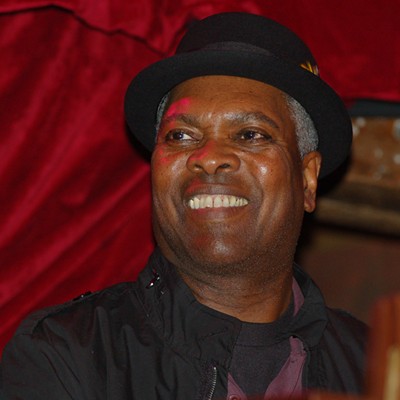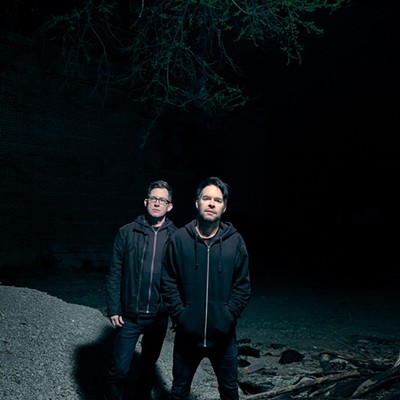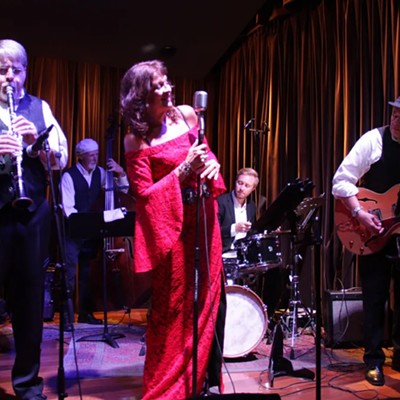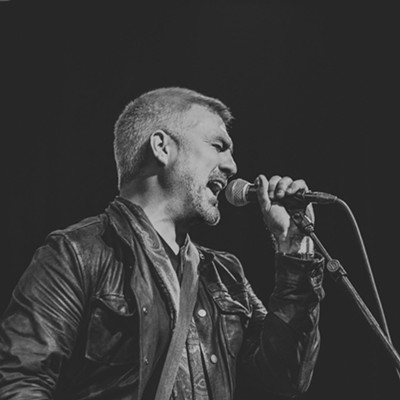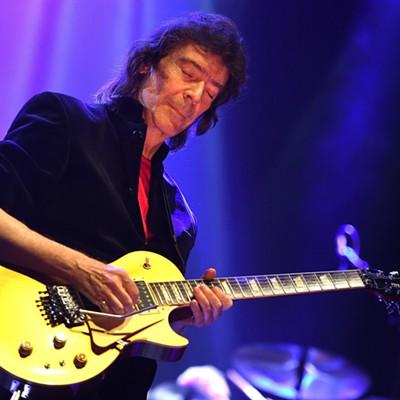"It is the maximum amount of blank white paper you can have in front of you and still be a band in the traditional sense, and still have the full power of what can happen with that sort of interaction, with all the kinds of things you can do dynamically," Metheny said in a recent telephone interview.
The Pat Metheny Trio, which includes bassist Christian McBride and drummer Antonio Sanchez, will perform Friday night, Feb. 29, at the Fox Tucson Theatre.
The trio is touring behind its new album, Day Trip (Nonesuch), which is attracting some of the best reviews of Metheny's oft-celebrated 33-year recording career.
His first album under his name, Bright Size Life, was a trio session recorded in 1975 with bassist Jaco Pastorius and drummer Bob Moses. He has since played in trios with such artists as Charlie Haden and Billy Higgins; Dave Holland and Roy Haynes; and Bill Stewart and Larry Grenadier.
Metheny has played in various combinations from duos to larger groups. However, he finds the guitar-trio format has much more territory to explore.
"Throughout jazz history, you can find all sorts of different kinds of trios. If you're talking the piano, bass and drums format, you automatically think of Bill Evans' or Oscar Peterson's classic trios, and with saxophone, bass and drums, there are the great Sonny Rollins and Ornette Coleman trios. But with guitar, bass and drums, it really remains somewhat undefined."
Before Metheny invited them to join him, McBride and Sanchez had never shared a bandstand, he said.
"They didn't know each other well. They had met a couple of times but had never played together. I have played a lot with both of them, though, and I thought it would be a good fit. And I think they work great together."
Although Day Trip was just released in January, Metheny has been playing regularly with McBride and Sanchez for the last four years or so, he said.
"It is a little ironic in that we are just now getting around to putting out a record. These days, you often get to go into a studio to do a record, then you tour. But we're sort of doing it the other way around with this trio, the old-school way, like how we did many of my first records."
Born in Kansas City, Mo., in 1954, Metheny first took up the trumpet at 8 years old and switched to guitar when he was 12, very quickly developing his talent and reputation. By the time he was 15, he was regularly gigging around Kansas City.
He taught at both the University of Miami and Berklee College of Music while still in his teens. By the time he was 21, he had made his recording debut with avant-garde pianist Paul Bley.
Metheny spent a critical early period (1974-1977) as a member of vibraphonist Gary Burton's group. By 1978, he'd met keyboardist Lyle Mays, and the two formed a quartet with bassist Mark Egan and drummer Dan Gottlieb.
He recorded albums that changed the face of jazz guitar in the late 1970s and early '80s. Albums such as New Chautauqua, American Garage, As Falls Wichita, So Falls Wichita Falls and Offramp helped him become the best-selling artist on ECM Records at the time.
During that period, Metheny created a unique new jazz guitar sound that took as its starting point a classic, hollow-bodied Wes Montgomery style but nodded toward the influences of Metheny's non-guitar-playing heroes: the bebop of Charlie Parker, the cool jazz of Miles Davis, and John Coltrane's adventurous embrace of traditional melody and the avant-garde.
These days, that individual Metheny sound is familiar the world over, and he said he always has strived to discover his unique voice.
"The 'sound' aspect is easily underestimated. We are in an age when there is so much virtuosity among players that the technical aspect is just overwhelming. There are so many young players out there who are amazing. ... But what it has to come down to ... is to create your own sound, something that is yours alone.
"Early on, that was really one of my priorities. For me, that almost came before the fluency."
A singular voice often is not only dependent on the aural qualities a player demonstrates, but on the uniqueness of his compositions.
"And in my case, I was composing music out of necessity," Metheny said. "It was a way to better reach my own sound before I got really fluent in the language of playing."
Not that anyone has faulted Metheny's technique. As his skills grew and evolved, he began playing with a wide variety of musicians in divergent styles, from Jim Hall to Derek Bailey, from Joshua Redman to Ornette Coleman. He has performed with Steve Reich, Herbie Hancock, David Bowie and Milton Nascimento.
His album 80/81 was a post-bop exercise with Dewey Redman and Michael Brecker. His 1994 album Zero Tolerance for Silence is an underrated exploration of feedback and distortion. He has recorded solo (One Quiet Night) and made a marvelous duet album in 2006 with pianist Brad Mehldau, another artist who knows no boundaries.
Metheny has won 17 Grammy Awards--including an unprecedented run of seven consecutive for seven albums in a row--and it's a testament to his diverse range that the categories in which he has been honored include jazz fusion, contemporary jazz, rock instrumental, jazz instrumental and new age.
Just as he bridges genres, Metheny also does not fear technology. He plays acoustic and electric guitar, 12-string, guitar synth, sitar guitar and a custom-made instrument called the Pikasso, which has three necks and 42 strings.
"For me, being a guitar player, my first act was plugging in," he said. "I've come to depend on knobs and wires and digital technology the same way a sax player depends on his reeds, the way a trumpeter uses his mouthpiece. It's just kind of part of the instrument for me."



